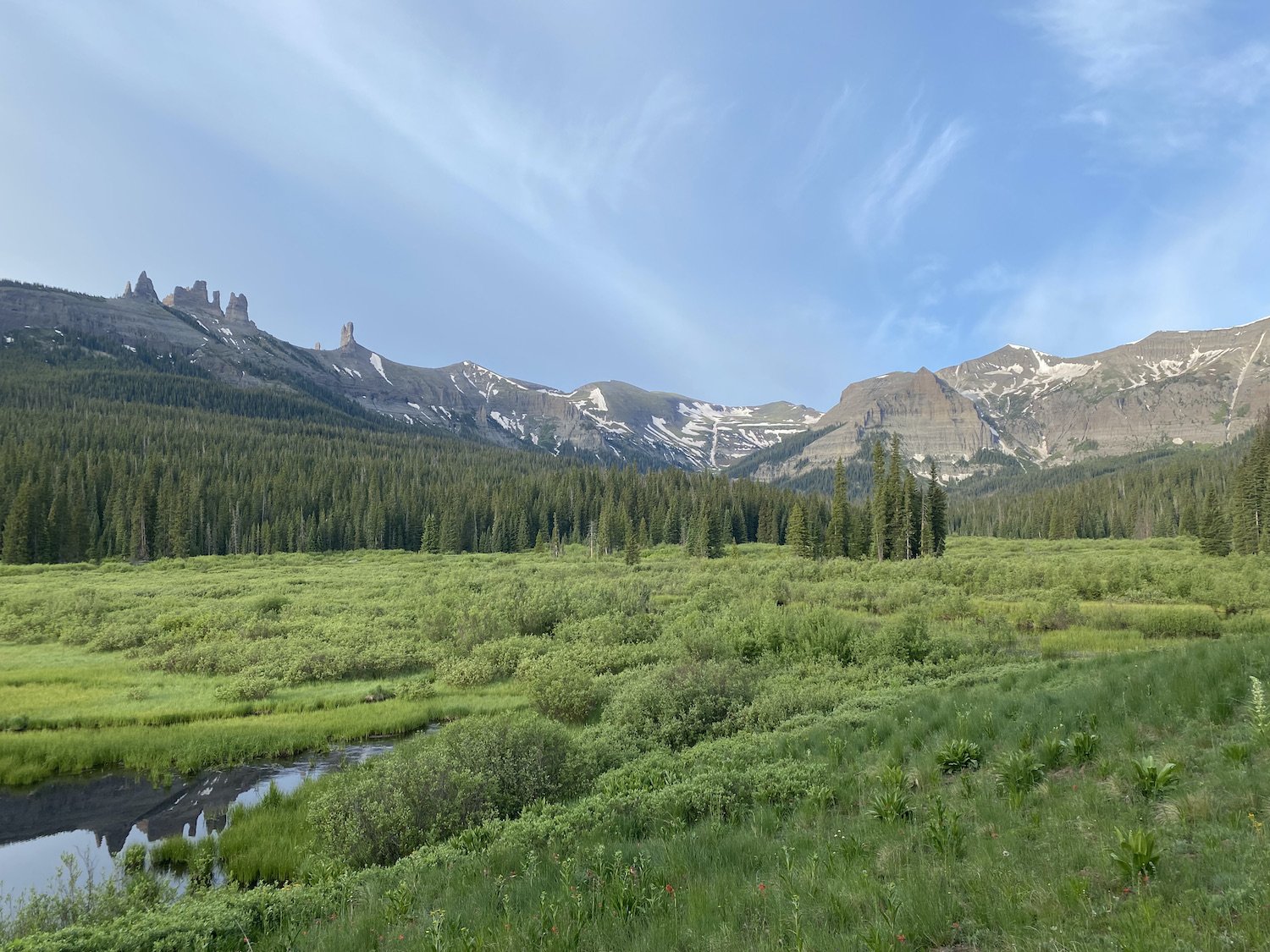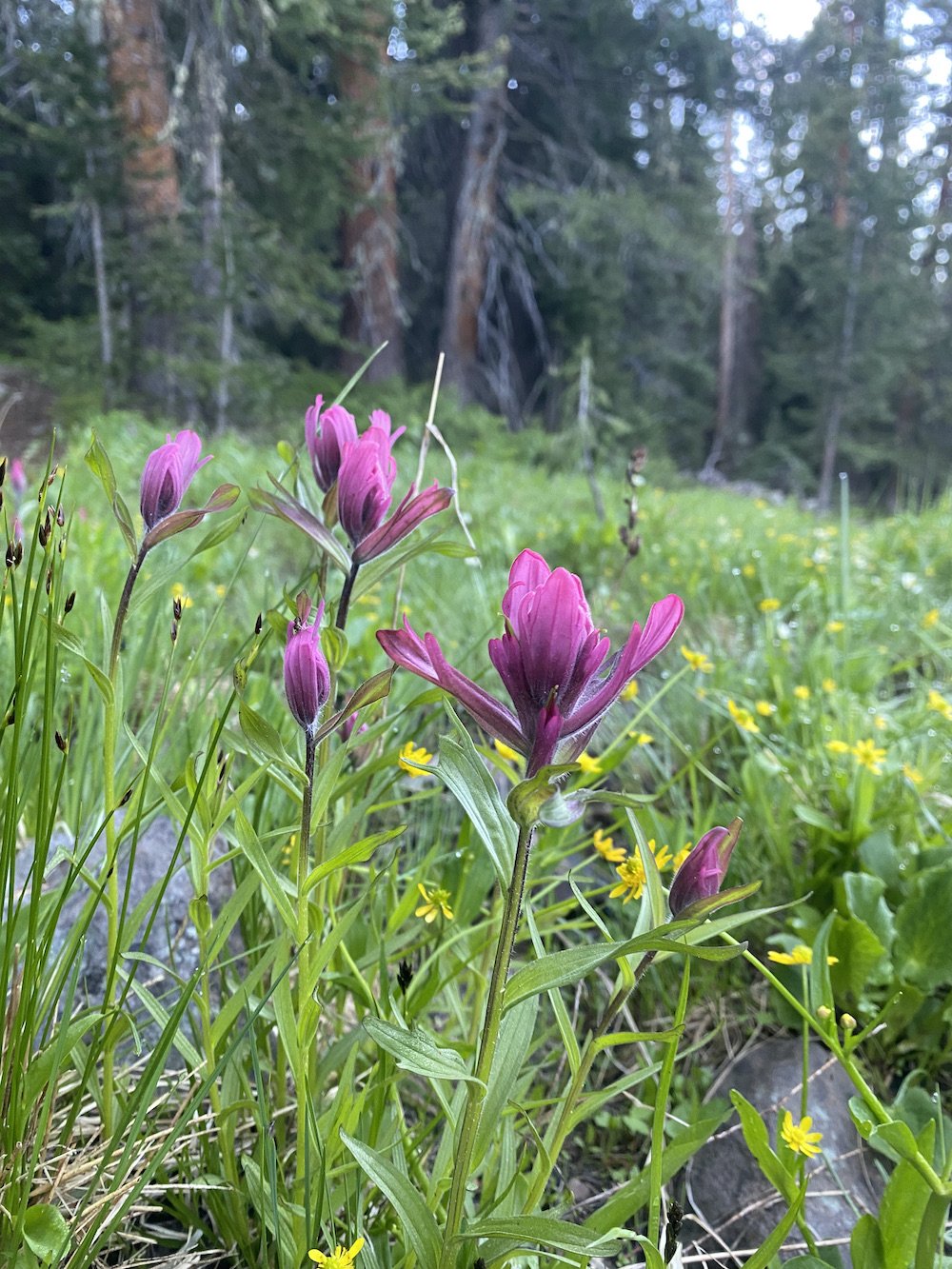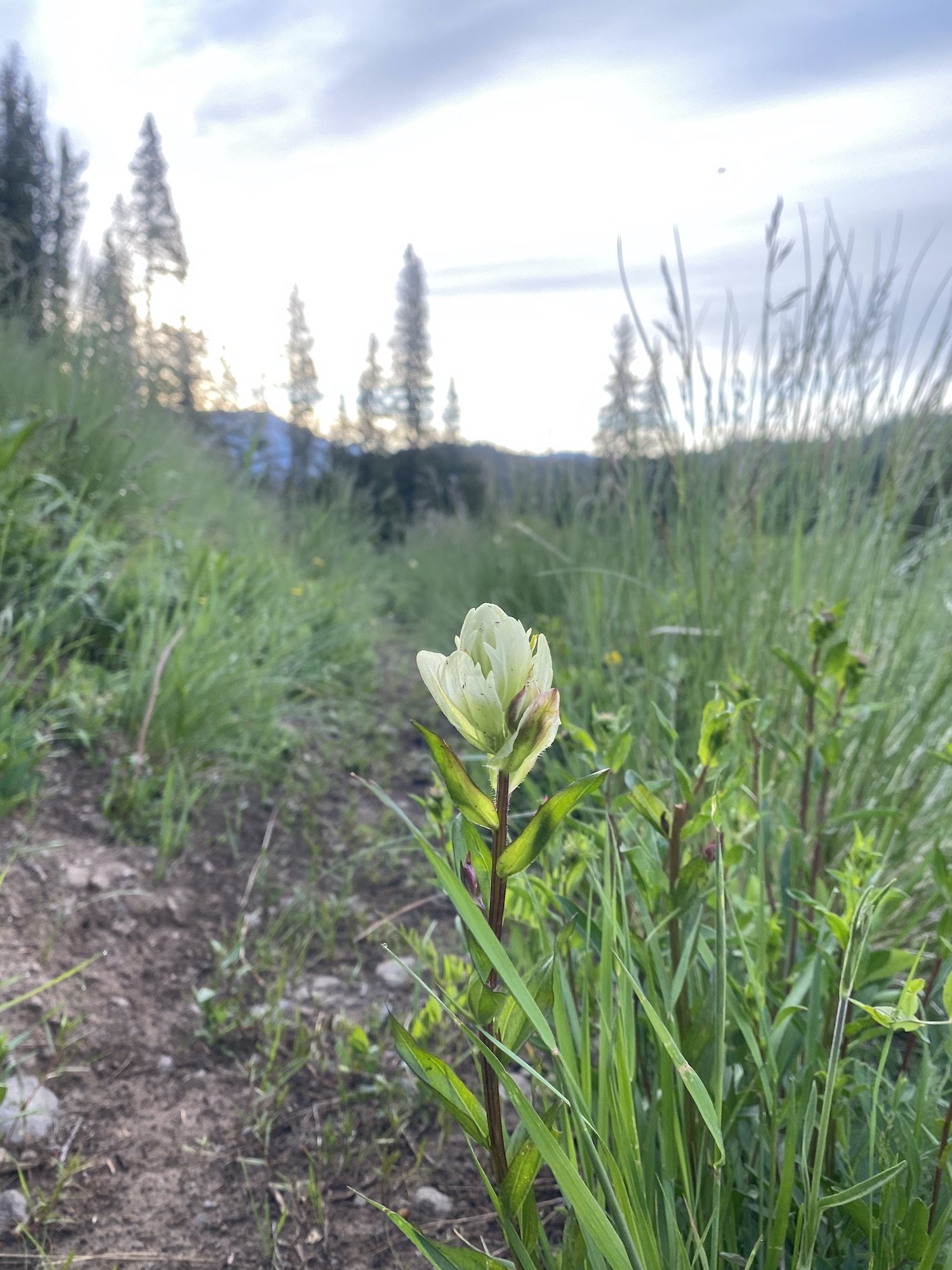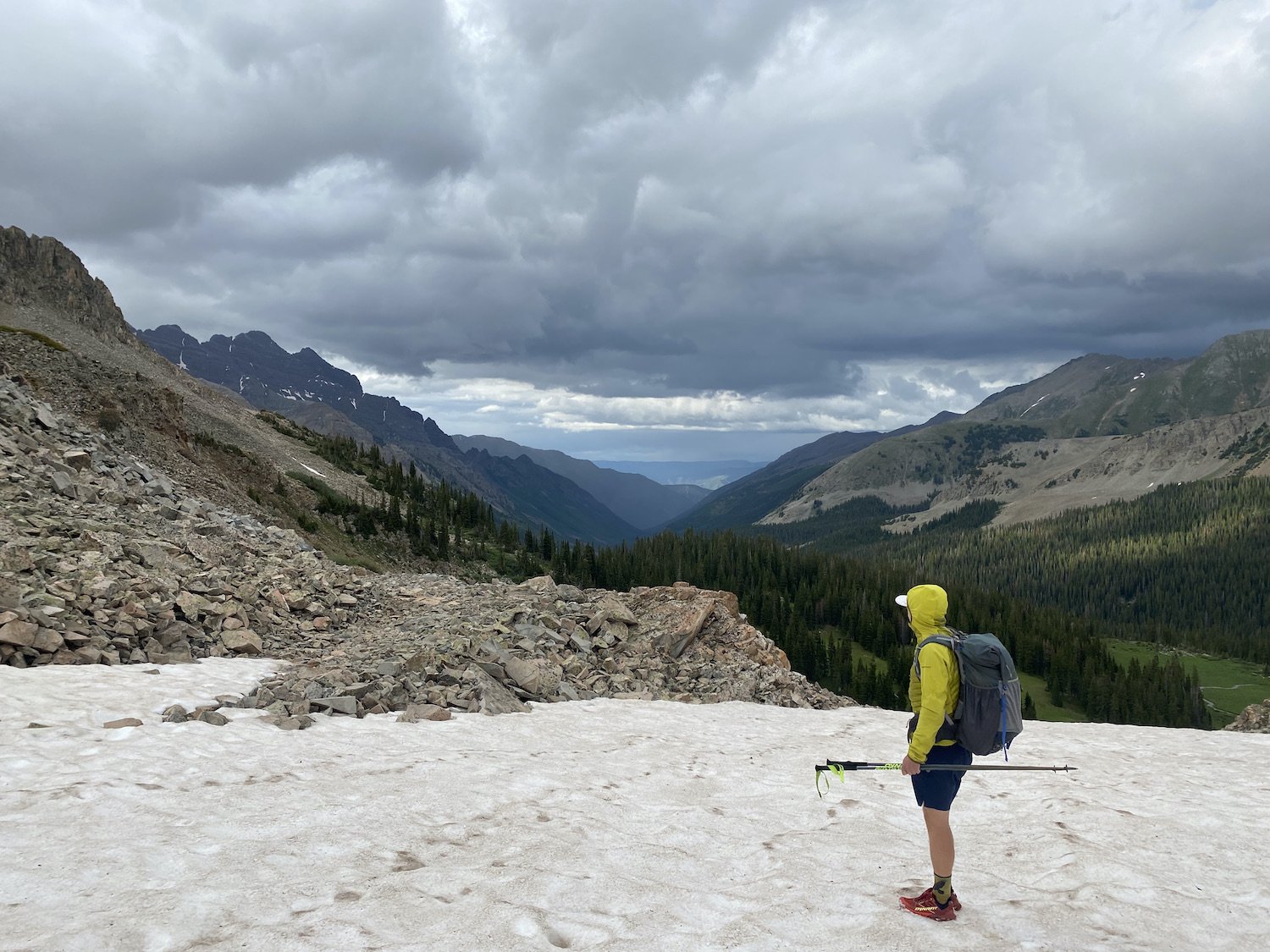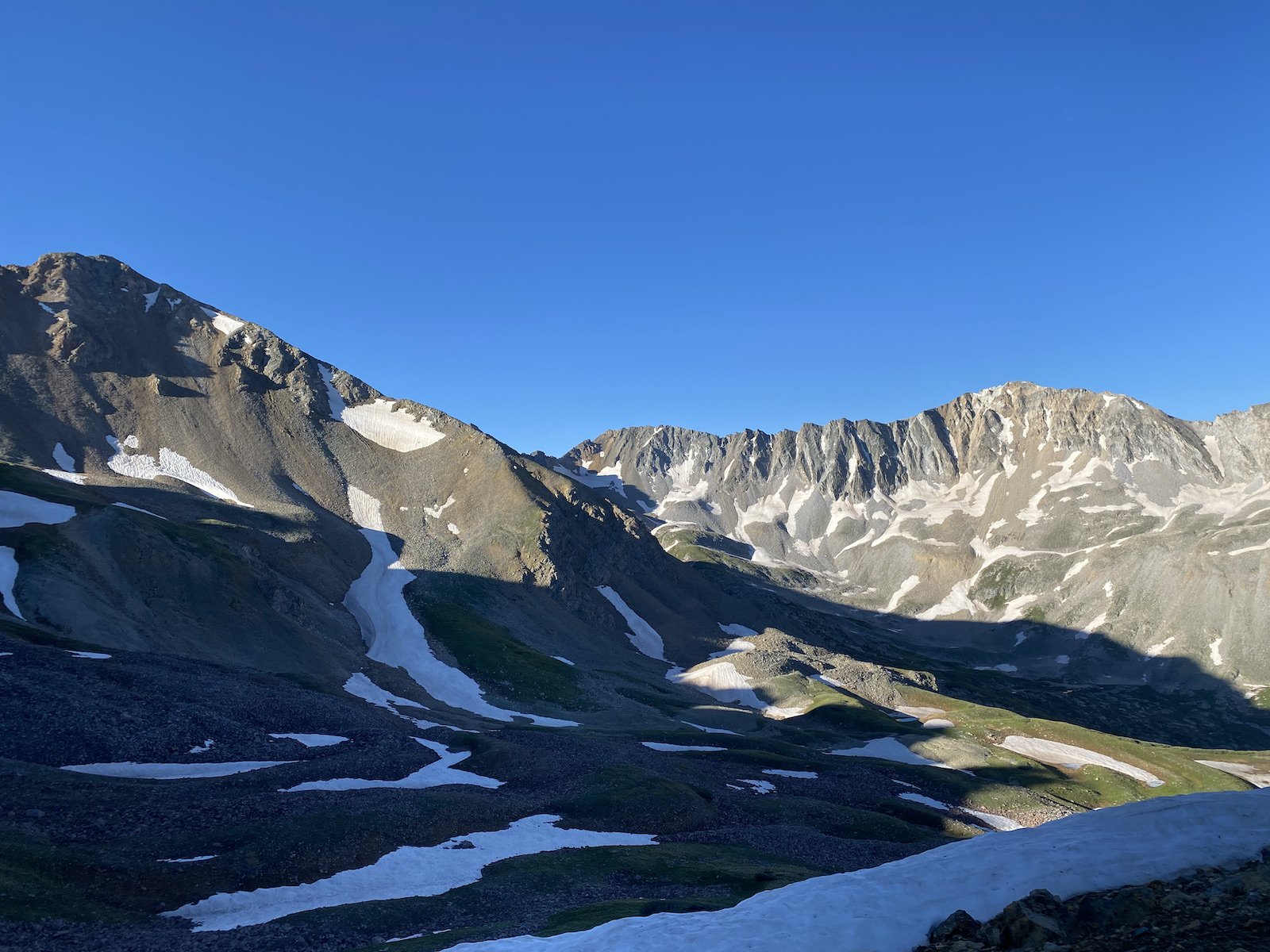8 Tips for Sleeping Warmer when Backpacking in Cold Weather
Backpacking in the shoulder seasons is a stunning experience; waking to the tundra, bedazzled in sparkling frost, the first rays of the sun warming a nearby creek, its surface wreathed in steam, the foggy breath of elk and deer as they munch grass quietly in the pale dawn light, the fragile buds of flowers encased in delicate shells of ice.
A warm cup of coffee has never tasted so good, still warm and snuggly in your sleeping bag—
That is, if you slept warm.
Maybe you spent the entire night shivering in your tent, cursing your cold feet and butt.
You can’t even enjoy the beauty of the morning because you are so miserably frigid.
Camping and backpacking in the spring, fall, and winter, at higher elevations can be quite cozy, IF you follow these 8 tips:
Fill a Nalgene water bottle with boiling hot water and place it in the foot-box of your sleeping bag before you go to sleep
Heating up the air in your sleeping is a crucial element in having a warm night of sleep, and sometimes it pays to have a little outside help if your core temperature is low to begin with
Do crunches and toe-touches INSIDE your sleeping bag before trying to fall asleep
If a Nalgene or a stove isn’t part of your ultralight kit, you can generate body heat inside your sleeping bag all by yourself; the effect is two-fold, you are not only heating yourself up, you are also warming up the air trapped in your bag!
Don’t go to sleep hungry
Eating a snack before bed will give your body some extra calories to devote to generating body heat while you sleep
Make sure your sleeping bag is rated to the appropriate temperature
A 20 degree sleeping bag might keep some sleepers warm on a 20 degree night, but not all! If you know you sleep cold (many women do) a 20 degree bag might only be enough to keep you warm on 32 degree night.
A lot of factors play into how warm a sleeping bag is:
mummy bags (fully enclosed, hooded sleeping bags) are by far the warmest options, as we loose a lot of heat through our heads and shoulders
quilts (hoodless sleeping bags with clips or a minimalist zipper) may not keep you quite as warm a mummy bag when the temps drop below freezing BUT a lot of brands which specialize in quilts make a detached hood you can opt to carry on colder nights.
synthetic fill vs down: in general, it is accepted that feathers are warmer than fibers, down is also lighter weight and more compressible (think packability) than synthetic fill. I will say, though, my -15 degree synthetic mummy bag (while 5lbs and NOT highly packable) is the warmest bag I own. After its debut on the northern ice field in Patagonia, it now lives in my truck for winter car camping excursions.
when choosing a down bag, fill-power, which describes how much space a given down type fills and speaks to the quality of the down, is another element to consider
Do not sleep in too many layers of clothing
Clothing like rain coats, wind layers—even a puffy jacket—traps body heat efficiently, preventing the air inside your sleeping bag from heating up; this actually makes you colder in the long run because your sleeping bag can’t do its job
Long underwear layers, fleece layers and wool socks, which are more breathable, keep your body temp up and allow the air & insulation in your bag to heat up too
Choosing the appropriate sleeping pad based on R value
R value describes a sleeping pad’s ability to resist heat transference between your body temperature and the ground temperature
A sleeping pad with a low R value can fool you into thinking your sleeping bag isn’t doing its job; appropriate R values for each season are as follows:
1-3: summer
3-5: 3 season
5+: winter
Before you march angrily to your computer and sell your sleeping bag on eBay, double check whether your sleeping pad is pulling its weight in the equation; you can test your pad without breaking the bank, too, by following the next tip
DIY sleeping pad insulation (on a budget)
As R values climb, so do the prices (and weight) of sleeping pads
You can take a summer pad and turn it into a 3 season pad by slipping it into a sleeve made out of an emergency blanket (fold it in half, then seal 2 of the 3 sides with duct tape), even simpler, just lay a mylar sheet underneath your pad each night to reflect your body heat back into the pad.
I would like to make a plug for the Z Lite SOL accordion foam sleeping pad by Thermarest, this pad costs much less than its inflatable counterparts and has kept me warm sleeping on a glacier for nights on end.
Finally, empty your bladder
You heard me! Get out of your tent and pee, don’t hold it for another second!
It may be brutally cold out there, but sleeping with a full bladder means your body is working double time to keep all that fluid you are storing the same temp as you; the sooner you pee, the sooner your body can go back to heating itself and not your urine
Sleeping warm means sleeping well; it means waking up feeling refreshed enough to sip a hot bev from the comfort of your tent and really appreciate the world around you, in all its frost dazzled (or snow dazzled) glory.
Taking time to assemble the appropriate gear, packing some pre-bedtime snacks, and mentally stealing yourself to get out of your tent and pee in the middle of night, will turn an otherwise bitterly cold trip, into a cozy one.
Take it from a hiker who’s done everything wrong more than once, and wound up very cold and sad.
Sincerely,
Kaleidoscope

